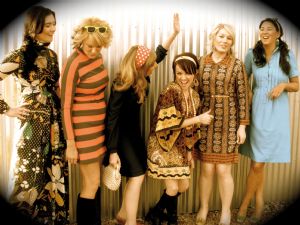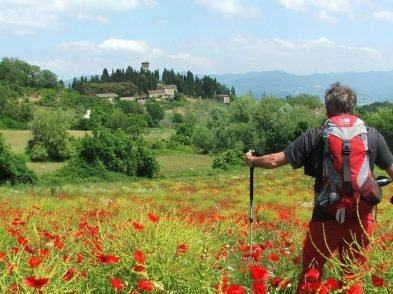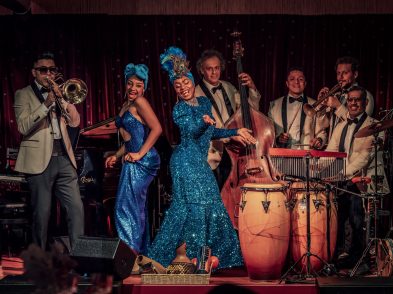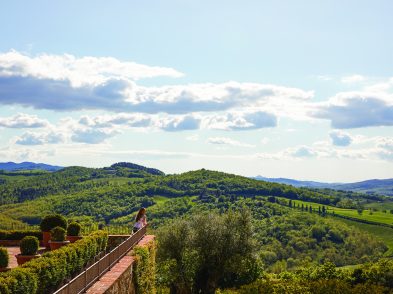Halloween in Italy may be considered just as much of an American import as peanut butter, but it is, in fact, a holiday that was first celebrated by the Celtic tribes inhabiting Northern Europe and Ireland. With its original intent as a celebration of the end of summer, over the years, the date was set and the name, Hallows’ (‘Saints’) Evening (hence, Halloween), came to be fixed in late October and connected to Christian All Saint’s Day. With the influx of immigrants from Europe to the United States in the twentieth century, the tradition morphed into a night of spooky and scary, a far cry-or scream-from its origins. Although Halloween may be better known in Florence and Tuscany as a religious holiday than a day for dressing up in whimsical costumes, there is no lack of spooky lore and legend in the region.
In Florence this Halloween and have a hankering for the scary, creepy stories that have become so popular in America? Fear not, there are ghosts galore haunting Tuscany. Whether their story is of the lingering spirit of a spurned lover or the meddling ghost of a fifteenth-century beauty, nearby towns provide an array of opportunities to experience the region’s dark and spooky past.
DONNA BIANCA
Hidden in the surrounding hills of Florence, Castello di Vincingliata, a sprawling eleventh-century castle, was uncovered by Lord John Temple Leader in the 1800s. After a laborious restoration, which included architects and masons, the castle has been returned to its original splendour. Yet even after the centuries-long makeover was completed, an age-old story cannot be excised from this castle.
Donna Bianca, the beautiful daughter of the family who owned the castle at the time, had fallen in love with the son of her family’s archrivals. On the day of her wedding, she ascended to the top of the tower and saw her betrothed coming toward her. When, to her horror, she saw her own family kill her fiancé, she, in turn, died of shock.
To this day, many claim that Donna Bianca’s ghost can still be seen patrolling the top turrets of the castle, protecting those in love, especially unrequited love.
For information, contact Castello di Vincingliata, via di Vincigliata 21, Fiesole, tel. 055/599556749.
TERESA DELLA SETTA BOCCE GAETANI
Situated in a valley between Lucca and Pisa, Villa di Corliani offers both seventeenth-century elegance and an interesting ghost tale. When Teresa della Setta Bocce Gaetani married Count Cosimo Baldassarre Agostini at the villa in1755, the interior of the vast space was completely refurbished. As for Teresa, she seems to still inhabit the villa-even in the afterlife. Her ghost is said to move furniture around, rearrange tapestries, open and close doors and windows.
While these tricks may seem frightening to some, her good nature is apparent in her laugh, often heard emanating from the villa’s underground cellars. The current owners do not mind, of course: they are direct descendants of Teresa’s family.
If you are into hotel rooms that ‘go bump in the night,’ stay at the villa during a full moon to catch Teresa on horseback as she patrols the estate’s spacious grounds and 12 guestrooms.
For more information, see Villa di Corliani, S. S. Abetone 50, San Giuliano Terme (Pisa), tel. 050/818193.
BALDACCIO D’ANGHIARI
The beautiful Sorci castle and complex situated in Anghiari, Arezzo once commanded a 30-mile view and had a moat. While the location may be better known today for its excellent dinner menu than its superior defence capacity, a guest may encounter a unique dining experience in the form of a roaming spirit.
The spirit is said to be that of Baldaccio d’Anghiari who seeks revenge for the grave betrayal that led to his tragic death. D’Anghiari, a much-loved captain of the infantry of the Florentine state, was recognized with several honors for his courage and skill on the battlefield. However, he was also a mercenary, a hired soldier who would fight for whoever was paying, known to fight for and against both enemies and allies. In September 1441, when D’Anghiari’s men attacked the countryside around Piombino, the gonfalonier of justice of the Florentine state, Bartolomeo Orlandini, called D’Anghiari to Palazzo Vecchio. No realizing that he had been lured into a trap by an enemy, D’Anghiari was killed. An ancient document tells the tale: ‘He was injured and thrown through a window in Palazzo Vecchio, falling to his death in the courtyard. He was then decapitated at the entrance and his body put on display for hours.’
It is said that D’Anghiari haunts (especially at night!) both Palazzo Vecchio, the place where he was murdered, and Castello di Sorci, his home. While the clinking of his ghost’s armour is common background msuic to a diner’s evening at the castle’s renowned restaurant, each September, Baldaccio also roams the gardens. The castle itself is still beautiful, and the site of several scenes in the film, Non ci resta che piangere.
For more information, contact Castello di Sorci, Locanda al Castello di Sorci, Anghiari (Arezzo), tel. 0575/789066.
MARQUIS LUCRETIA
Built by the family of Lelio Buonvisi, this sprawling Tuscan estate is home to spirits aplenty. Buonvisi was married to the Marquis Lucretia, a woman known for her beauty, but also for her extramarital affairs, particularly her tryst with Massimiliano Arnolfini. In order to continue the affair, Lucretia had planned to have her husband assassinated. The plot, however, was uncovered, and Lucretia was sentenced to life in a convent and Massimiliano to life in prison.
While it is said that in summertime, the ghosts of the two lovers reunite on the lawns of the estate, Buonvisi’s spirit also haunts the villa, perhaps patrolling for a chance at revenge on the woman who betrayed him.
For more information, contact Villa Buonvisi, via per Villa Gaia 277, Massa Pisana (Lucca), tel. 0583/379089.






